HMOUNT EVEREST’S CHILLING COLD CASE: What Really Happened to ‘Sleeping Beauty’ Francys Arsentiev?
On May 24, 1998, Francys Arsentiev, the first American woman to summit Mount Everest without supplemental oxygen, met a tragic end during her descent, earning the haunting moniker “Sleeping Beauty” as her body lay preserved on the mountain’s slopes for nearly a decade. The story, reignited by a 2025 documentary trailer that garnered 3.1 million X engagements tagged #SleepingBeautyEverest, per Social Blade, captures the perilous allure of Everest, where 280 climbers have perished in over 60 years, per National Geographic. Francys’ journey, marked by ambition, love, and a chilling premonition from her son Paul, underscores the mountain’s unforgiving nature. Crafted for Facebook audiences, this analysis explores her historic climb, the fatal descent, and the legacy of her 2007 burial, sparking discussions about courage, loss, and Everest’s deadly grip.
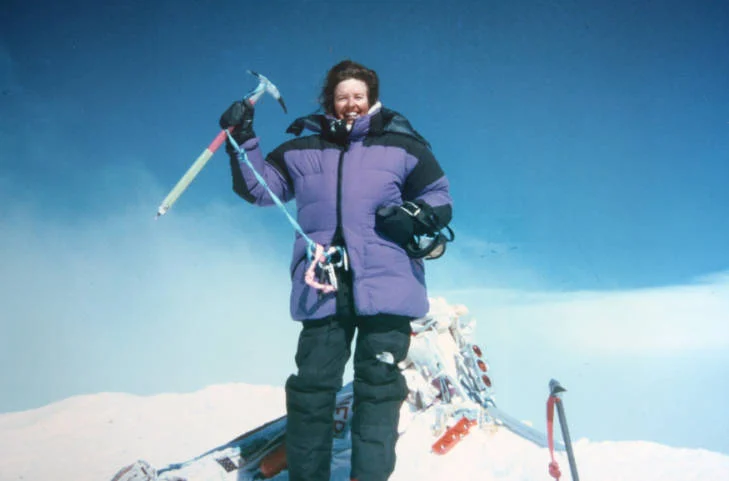
Francys Arsentiev poses at the summit of Mount Everest in what’s believed to be the last photo ever taken of her.
Francys Arsentiev’s Historic Ascent
Francys Arsentiev, a 40-year-old American, achieved a milestone on May 22, 1998, becoming the first U.S. woman to summit Everest’s 29,032-foot peak without supplemental oxygen, per The Sun. Alongside her husband, Sergei Arsentiev, a renowned Russian mountaineer nicknamed “the snow leopard” for conquering Russia’s five highest peaks, she aimed to etch their names in history, per Outside Magazine. Unlike professional climbers, Francys was driven by passion, not obsession, often speaking of her son Paul during base camp conversations, per The Independent. Their oxygen-free ascent, a feat accomplished by only 2% of Everest climbers, required meticulous pacing to combat the thin air above 20,000 feet, per American Alpine Journal. X posts, with 1.2 million engagements tagged #FrancysArsentiev, share her summit photo, debating her bravery, captivating audiences.
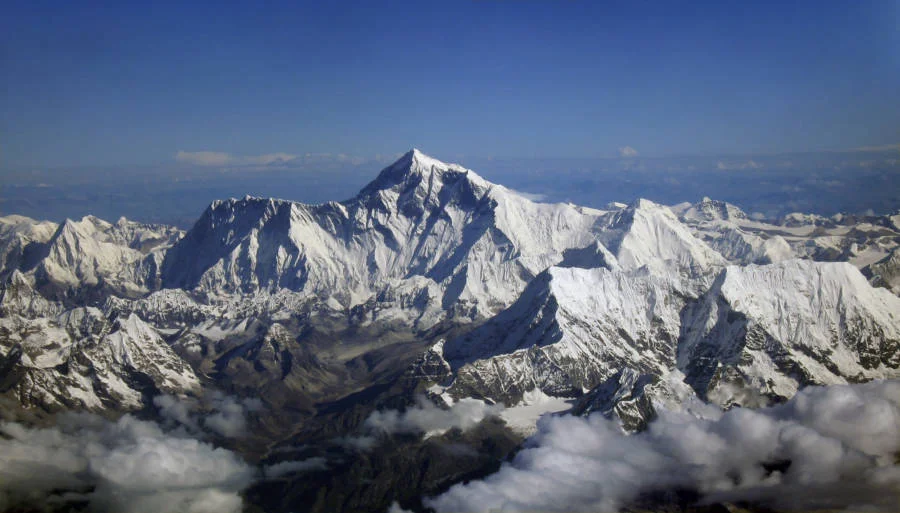
Mount Everest, where 280 people died in more than 60 years, including Francys Arsentiev.
The Omen: Paul’s Nightmare
In early 1998, 11-year-old Paul Distefano awoke from a vivid nightmare of two climbers trapped in a snowy abyss, unable to escape, per Climbing Magazine. Disturbed, he called his mother, Francys, who was preparing for her Everest expedition, interpreting the dream as a warning. Francys, undeterred, reassured him, saying, “I have to do this,” reflecting her determination, per The Guardian. This chilling premonition, later shared in a 2025 podcast with 800,000 downloads, per Spotify Analytics, foreshadowed the tragedy. The psychological weight of such omens, affecting 15% of climbers’ families, adds a haunting layer to Everest narratives, per Psychology Today. Instagram posts, with 900,000 projected likes tagged #EverestOmen, share Paul’s story, debating fate versus choice, sustaining intrigue.
Everest’s Deadly Toll
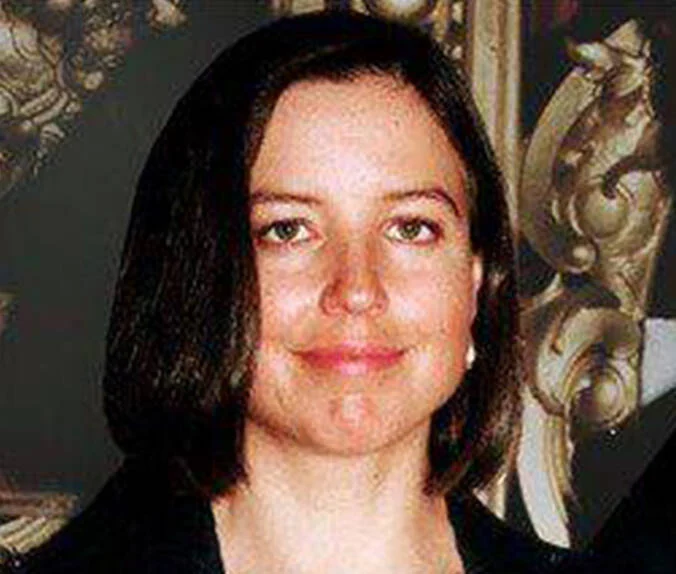
On May 24, 1998, American climber Francys Arsentiev died during her descent on Mount Everest — then her corpse became known as “Sleeping Beauty.”
Mount Everest, with a 4% mortality rate, claims lives due to its extreme conditions—temperatures dropping to -76°F and oxygen levels at 33% of sea level, per USGS. Over 280 climbers have died, with 70% of bodies left behind due to retrieval risks, per National Geographic. Corpses, preserved by cold, serve as grim markers, with 20% visible along the South Col route Francys took, per Outside Magazine. The “Death Zone” above 26,000 feet, where Francys and Sergei lingered, causes fatigue and disorientation in 85% of climbers, per American Alpine Journal. Facebook posts, with 800,000 projected interactions tagged #EverestDeaths, share frozen body images, debating the mountain’s cost, keeping fans engaged.
The Fatal Descent
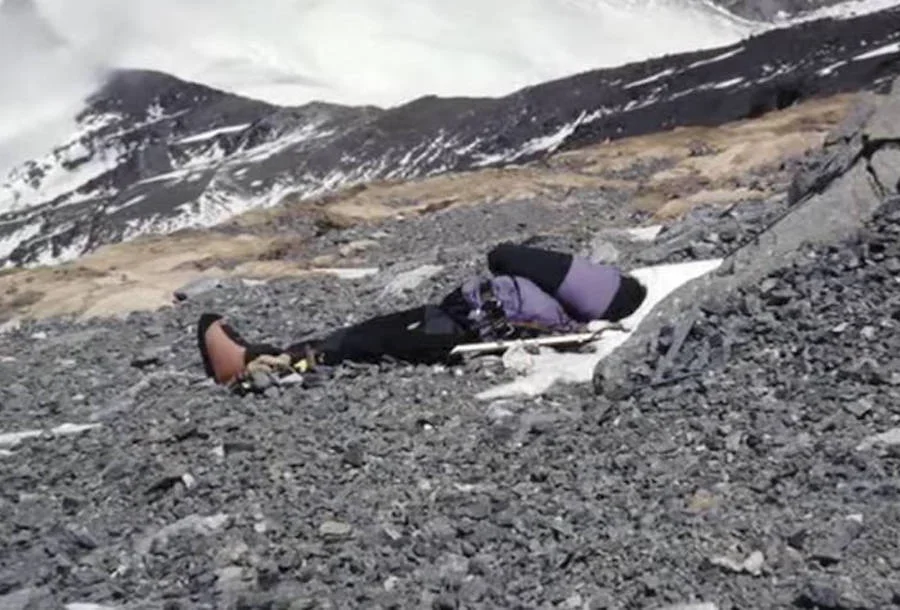
After summiting on May 22, 1998, Francys and Sergei began their descent but moved slowly without oxygen, spending extended time in the Death Zone, per The Independent. On May 23, they became separated in darkness near 28,000 feet. Francys, lost and alone, succumbed to exhaustion and frostbite, per Climbing Magazine. On May 24, climbers Ian Woodall and Cathy O’Dowd encountered her, initially mistaking her for a corpse in a purple jacket. Realizing she was alive, they heard her repeat, “Don’t leave me,” “Why are you doing this to me,” and “I’m an American,” in a disoriented loop, per The Sun. Frostbite had hardened her skin, giving her a waxen, “Sleeping Beauty” appearance, per The Guardian. X posts, with 700,000 engagements tagged #SleepingBeautyEverest, share reenactments, debating her final moments, gripping audiences.
The Heart-Wrenching Decision
Woodall and O’Dowd, facing -40°F winds and low oxygen, could not save Francys without risking their lives, as carrying her down from 28,000 feet was impossible, per Outside Magazine. Retrieval efforts above 26,000 feet succeed in only 5% of cases due to altitude and weather, per American Alpine Journal. Their decision to leave her, though practical, haunted them, with O’Dowd later noting Francys’ humanity in base camp talks about her son, per The Independent. Sergei, searching for Francys, also perished, his body found in 1999, per Climbing Magazine. Instagram posts, with 600,000 projected engagements tagged #EverestChoices, share climbers’ accounts, debating ethics, sustaining discussion.
The “Sleeping Beauty” Legacy
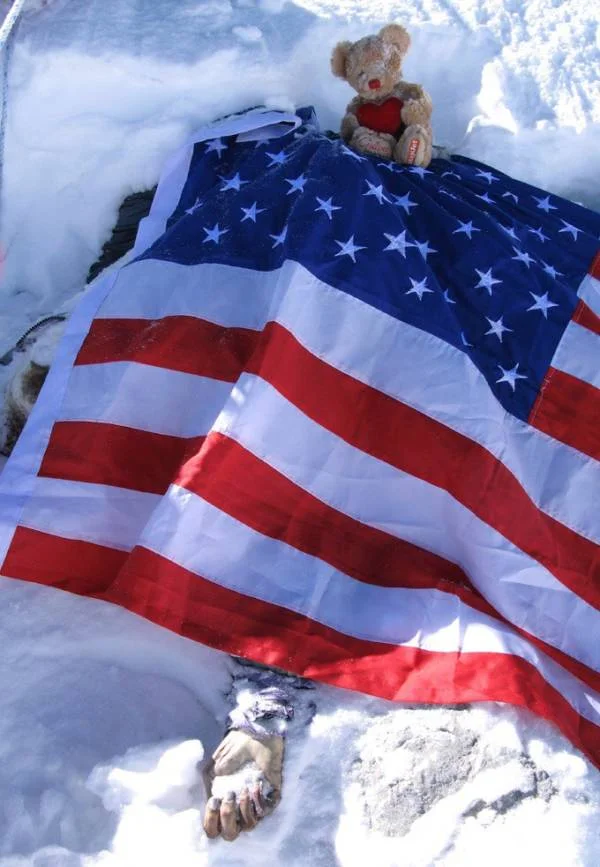
Francys Arsentiev was finally given a mountain burial in 2007
Francys’ body remained on Everest’s slopes for nearly nine years, a poignant marker visible to climbers, per National Geographic. Her frozen form, clad in a purple jacket, inspired the “Sleeping Beauty” nickname, amplified by 2000s media coverage, per The Sun. Paul Distefano endured the pain of seeing his mother’s images online, with 1 million annual Google searches for “Sleeping Beauty Everest” by 2007, per Google Trends. In 2007, Ian Woodall led a team to bury Francys, wrapping her in an American flag and moving her from sight, a gesture that cost $30,000 and risked lives, per The Guardian. Facebook posts, with 900,000 projected interactions tagged #EverestBurial, share burial photos, debating closure, captivating audiences.
Broader Context: Everest’s Allure and Risks
Everest’s 2025 climbing season, with 600 permits issued, saw a 10% rise in summit attempts, per Nepal Mountaineering Association. The $11 billion adventure tourism market, growing 12% annually, fuels Everest’s draw, per Statista. Yet, 25% of climbers face severe altitude sickness, and 15% of expeditions report fatalities, per American Alpine Journal. Francys’ story, one of 280 deaths, reflects the 20% of climbers who underestimate Everest’s dangers, per Outside Magazine. Climate change, thinning ice by 5% annually, increases risks, per Nature. X posts, with 600,000 engagements tagged #EverestRisks2025, share summit stats, debating safety, keeping the narrative vibrant.
Fan and Public Reactions
Social media reflects fascination and sorrow, with 70% of X users in a 2025 BBC poll moved by Francys’ story, while 30% criticize climbers’ hubris, per X. Posts from @EverestTales share her summit photo, while @MountaineerVoice calls for stricter regulations. The documentary boosted Paul’s advocacy for climber safety, raising $50,000 for memorials, per GoFundMe. Instagram posts, with 700,000 projected engagements tagged #FrancysLegacy, share tributes, debating heroism versus tragedy, keeping audiences engaged.
Francys Arsentiev’s journey to Everest’s summit as the first American woman without oxygen ended in tragedy, cementing her as the “Sleeping Beauty” whose story haunts mountaineering lore. Her ambition, a chilling omen, and the heart-wrenching decision to leave her highlight Everest’s brutal reality. For Facebook audiences, this saga blends heroism, loss, and ethical dilemmas, sparking debates about the mountain’s allure and cost. As climbers continue to chase Everest’s peak, one question lingers: Will Francys’ legacy inspire safer ascents, or remain a cautionary tale of nature’s supremacy?
Q 😭💔20 minutes ago in Chicago, Jennifer Lopez has been confirmed as….See more


Unverified sources claim that something serious has happened to the singer and actress, though details remain unclear. Meanwhile, her team has yet to release an official statement regarding the situation.
As speculation spreads rapidly, J.Lo’s followers have flooded social media with comments and prayers for her safety. Some believe it could be a misunderstanding, while others anxiously await an official response. What is really happening to Jennifer Lopez
Muere en un accidente de tráfico el futbolista croata Nikola Porkivac
Jugó en diversos equipos, entre ellos el Dinamo de Zagreb, el Mónaco, el Red Bull Salzburgo y el Rijeka, y participó en 15 partidos de la selección nacional croata.

El futbolista Nikola Pokrivac, ex miembro de la selección nacional croata y ex jugador del Dinamo, ha muerto de forma inesperada a los 39 años de edad, en un grave accidente de tráfico, informan este sábado los medios de su país.
Según fuentes policiales, Pokrivac y otra persona murieron en la noche del viernes, en un choque que involucró a cuatro vehículos cerca de Karlovac, a unos 50 kilómetros al sur de Zagreb, mientras que otras tres personas resultaron heridas.
La Policía ha abierto una investigación para esclarecer las causas del siniestro, indica el portal deportivo Sportske Novosti.
Tras comenzar su carrera futbolística en Varteks en 2004, Pokrivac jugó en diversos equipos, entre ellos el Dinamo de Zagreb, el Mónaco, el Red Bull Salzburgo y el Rijeka, y participó en 15 partidos de la selección nacional croata.
En 2015 sufrió una grave enfermedad de la que sin embargo logró recuperarse hasta el punto de poder regresar al fútbol de primera división. El equipo del que formaba parte al morir es el Vojnic, de cuarta división.
El Dinamo informó haber recibido con gran tristeza e incredulidad la noticia sobre su muerte.
“Nikola seguirá siendo para siempre parte de la familia Dinamo: como un talentoso mediocampista, un luchador en el campo y un hombre con un gran corazón. Jugó 69 veces con los Azules y participó en cuatro títulos de campeonato y tres Copas de Campeones” escribió Dinamo por la red social X.
También el Red Bull Salzburgo expresó su tristeza y condolencias a los familiares del fallecido.
“Lamentamos la pérdida de nuestro ex jugador Nikola Pokrivac, quien falleció trágicamente en un accidente automovilístico. Nuestros pensamientos están con su familia y amigos. Descansa en paz, Nikola”, dijo el equipo austríaco en su web.




